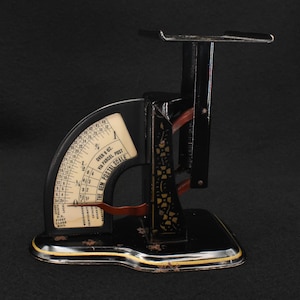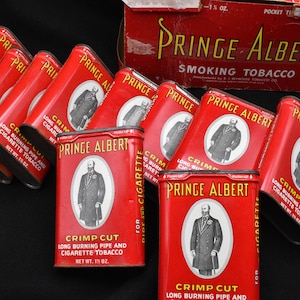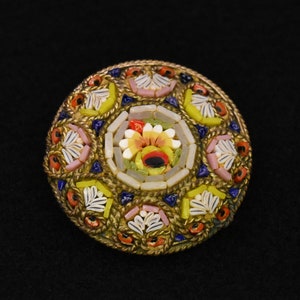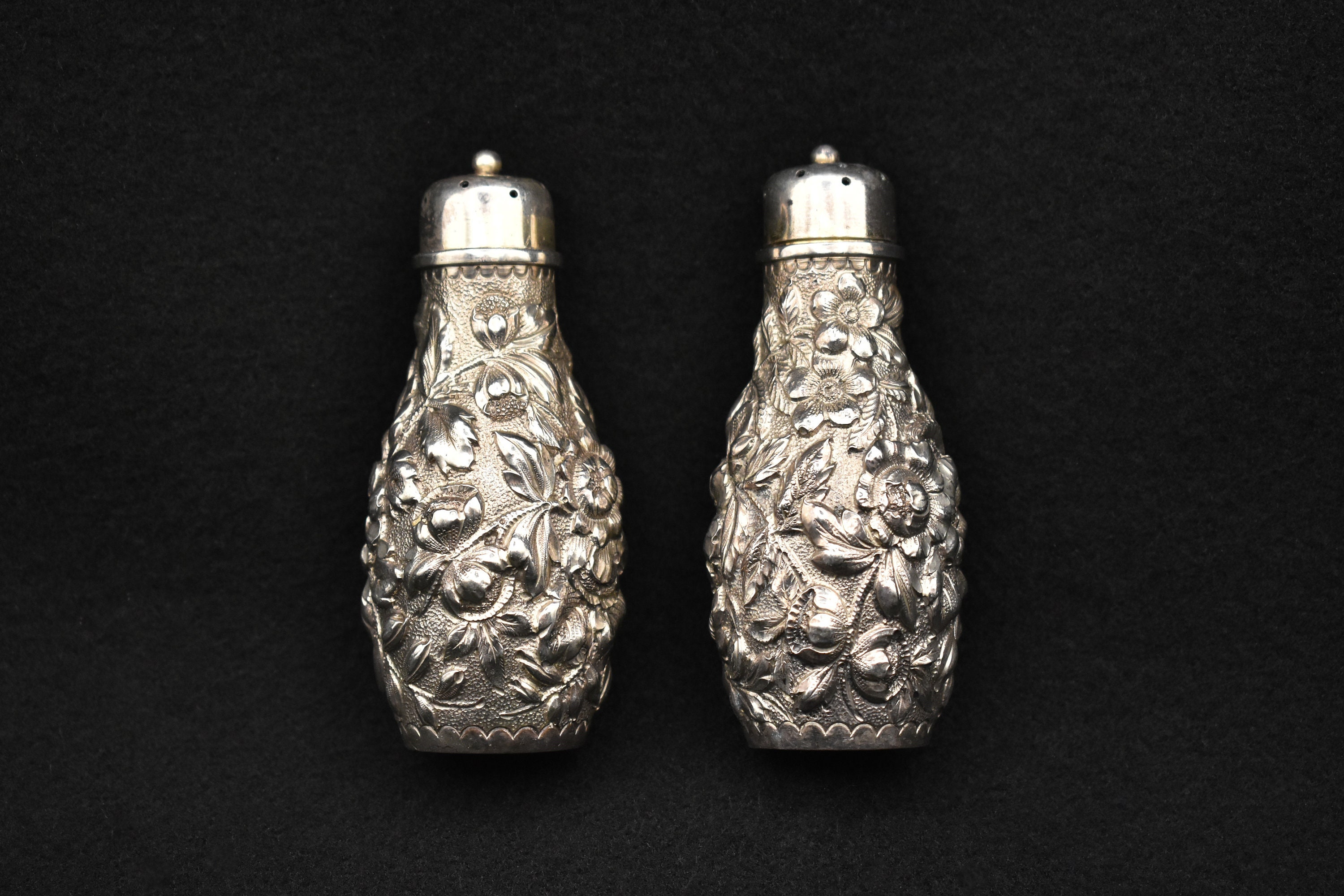
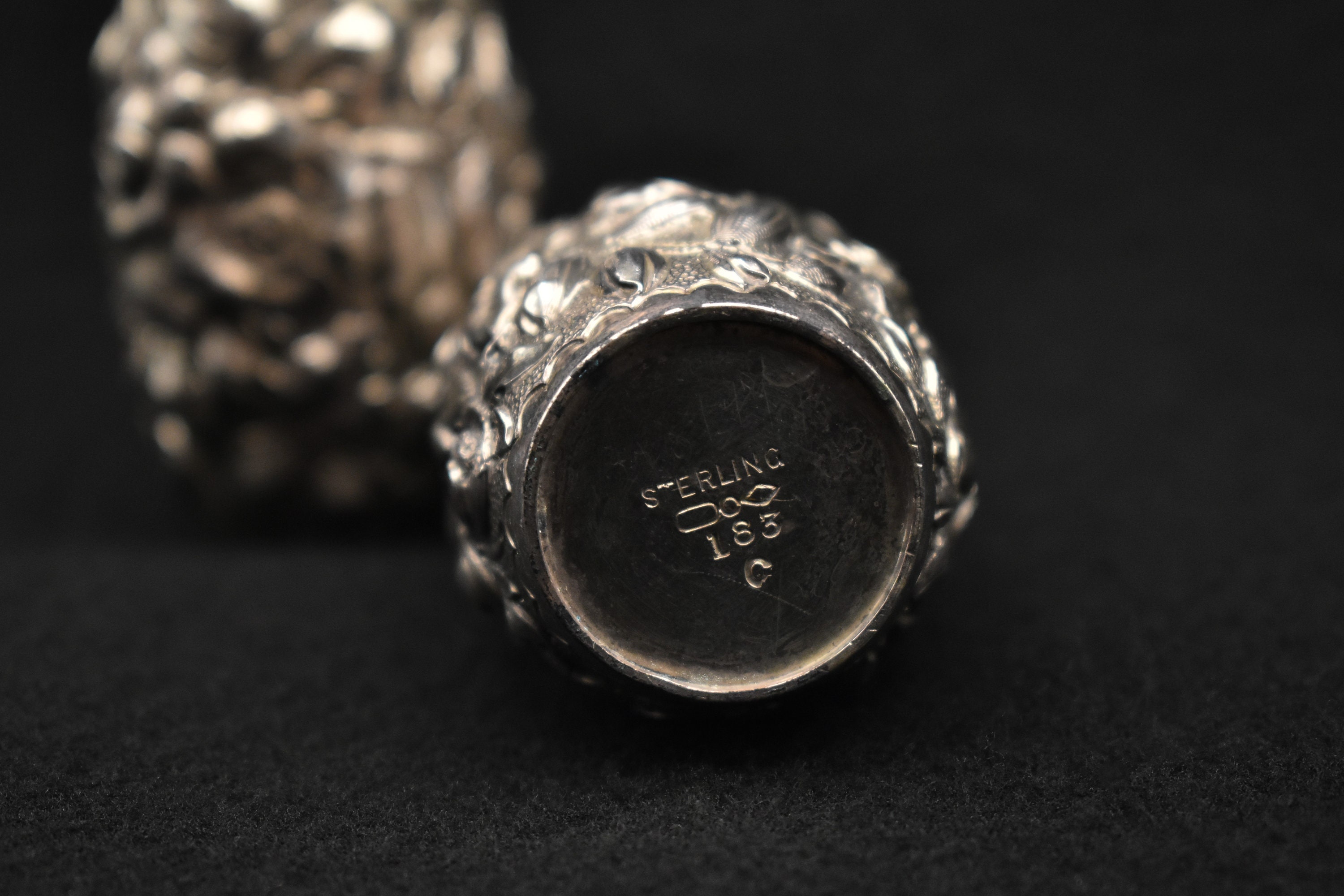
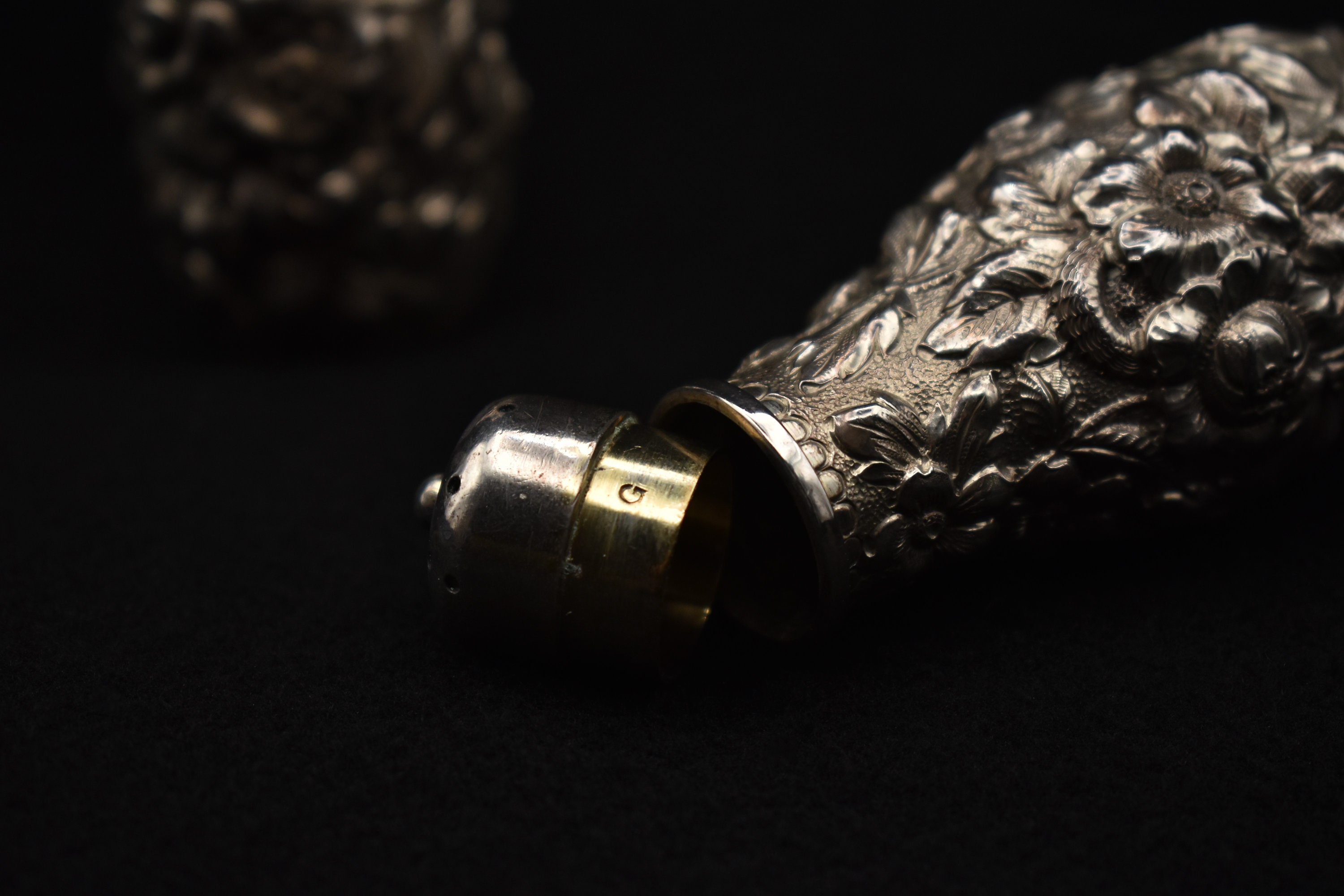
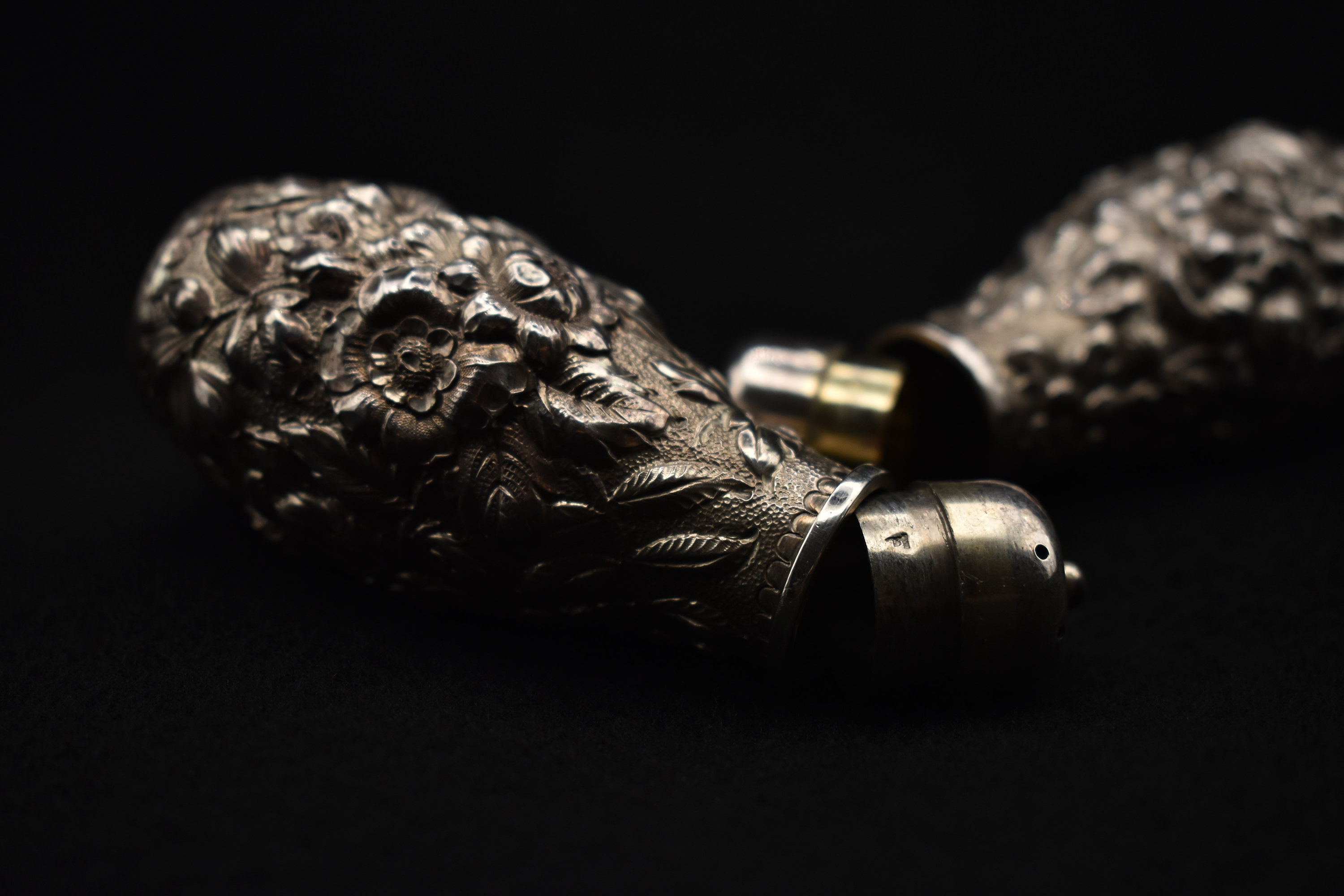
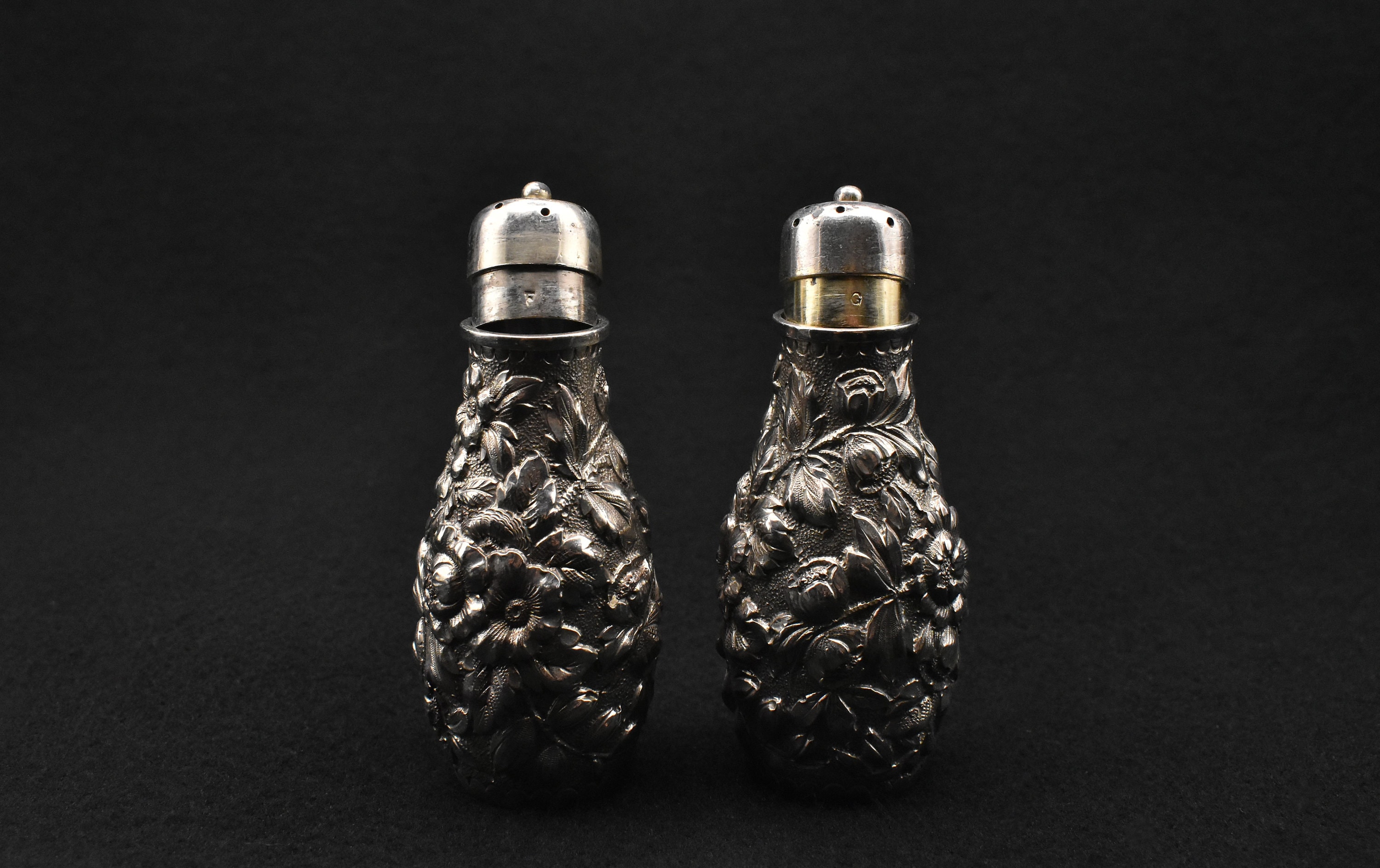


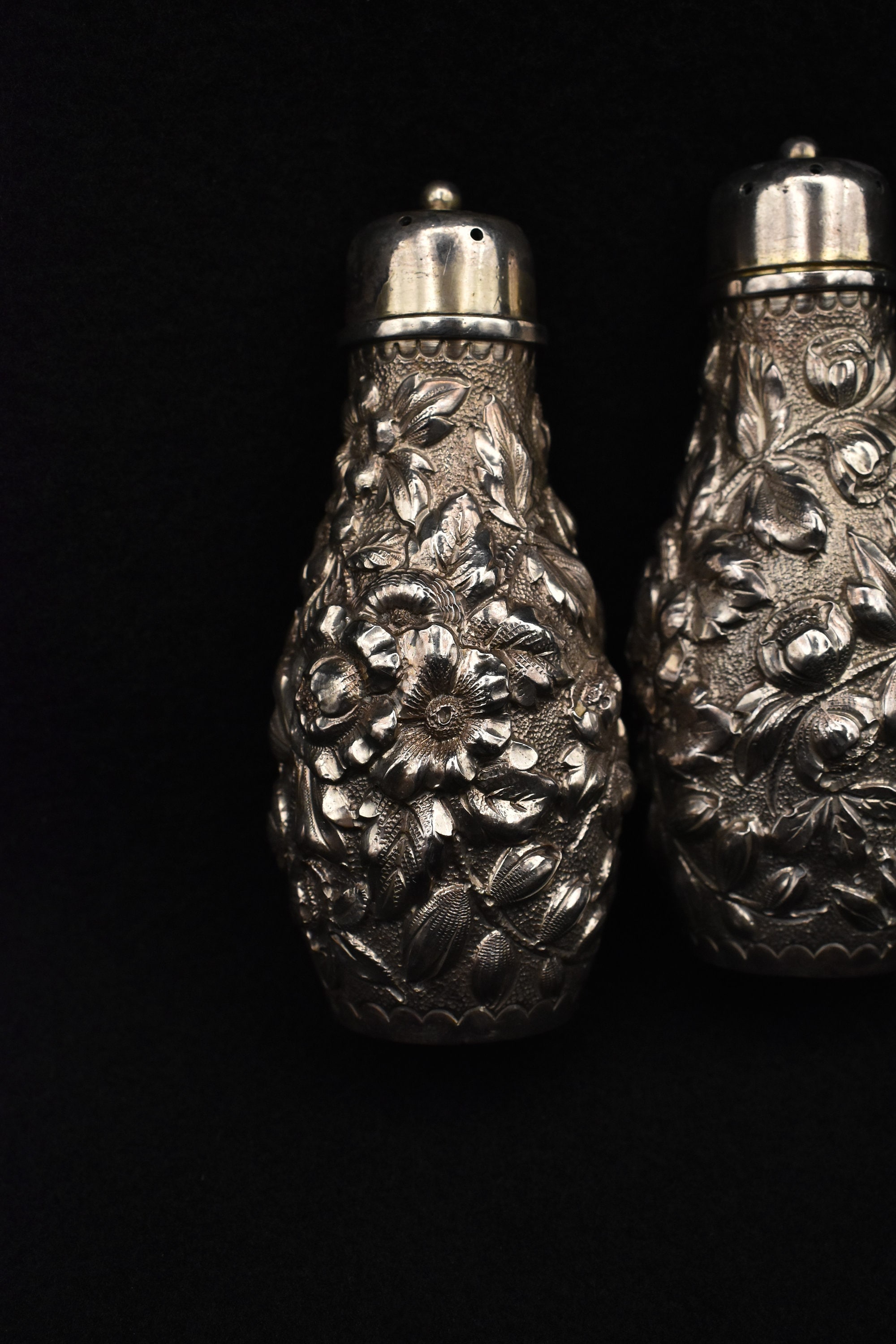
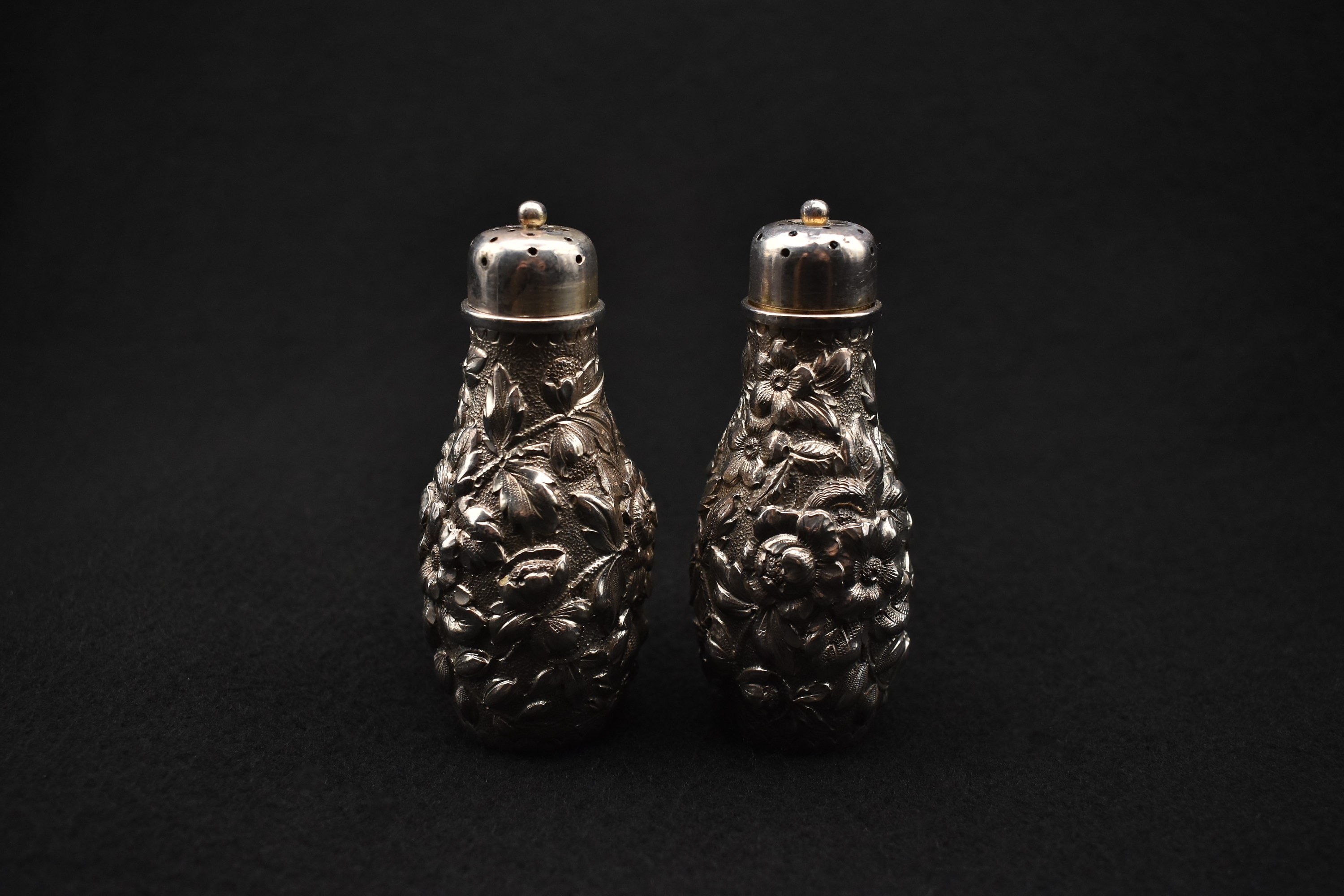
Antiques
Antique Dominick & Haff Repoussé Salt Pepper Shakers
$227.39
-
DetailsPlease note -TARIFFS PAID! US buyers need not worry about any additional charges! Order with confidence, knowing you won't be surprised with any additional fees.
Dominick & Haff was an American silver manufacturer based in New York City. It was co-founded by Henry Blanchard Dominick and Leroy B. Haff in 1872, incorporated in 1889, and it closed down in 1928.[1] The firm designed pots, mugs, centerpieces, spoons, tea sets and kettles. I know… not terribly interesting. As boring as their business and partnership history is, their wares were so impressive, they’re currently featured in no fewer than half a dozen fine arts museums in the US.
The firm has a long history, with many founders joining established firms. D&H can trace its beginnings to William Gale & Son, which began in NY in 1821. William Gale & Son changed their name to Gale and North in 1860, before Henry Blanchard Dominick joined the company in 1868, subsequently changing their name to Gale, North and Dominick in 1868. By 1872, Leroy B Haff joined the company and the name was finally settled at Dominick & Haff. They were incorporated in 1889 and, bolstered by more than half a century of impeccable craftsmanship, garnered an impressive reputation as one of the most artistic and creative silverware makers in the US. They have beautiful pieces of varying styles, but they specialized in repoussé silver. Repoussé or repoussage is a metalworking technique whereby a metal is hammered from the reverse side to create a design in low relief. Using special tools, an immensely talented craftsman would hammer, mold, fold and manipulate precious metals into the most amazing three-dimensional scenes. With textured backgrounds and truly amazing realism, one can only imagine the favour these must have commanded at supper, dancing in the Victorian candlelight and gas lamps.
Our examples are simply stunning. They are both in stunning condition, given their age. All markings are clear, however, I can’t decipher a lick of it. The maker’s mark is clear (the rectangle-circle-diamond), as is the ‘Sterling,’ but the numbers beneath that could indicate a variety of things. Could be the model… could be the craftsman. Sadly, I’ve been unable to unearth any concrete explanation. I’m assuming when the firm was purchased by Reed & Barton (a huge silver manufacturing conglomerate which gobbled up silversmiths across the US) in 1928, they failed to preserve D&H’s records. The maker’s mark we see has versions to it – there’s a version that’s slightly larger and within those small shapes was engraved the date and the initials ‘D&H.’ I’ve seen examples of this (our, undated) mark and I’ve seen examples of the more detailed mark. I can make some assumptions based on my findings – that is all. It seems that this mark was decided on early-on. One of the earliest examples of the ‘empty’ mark dates back to the 1870s. The earliest example of the dated mark, that I’ve been able to locate, is 1882. Given that the name Dominick & Haff was only cemented in 1872, it could be that this pair of stunning shakers hail from the 1870s-80s, the early years of the partnership. The condition of the stamp must also be taken into account. In almost every example of the non-dated mark, they are faded – some almost entirely. This indicates an older piece. All that being said, the latest dated mark I have seen is 1918. I must concede to the possibility that this is a later stamp for pieces created in the final 10 years of D&H. The ‘F’ and ‘G’ you see on the base also had me perplexed, but not for long. They serve a singular and simple purpose – to make sure you don’t mix up the heads of the shakers. Each piece is hand-hammered and created from solid silver, so no two lids will ever be alike. As such, to avoid a dangerously stuck lid, these letters were engraved into the base and necks of the heads.
Regardless of the date of creation, these shakers were brought into existence by some remarkably talented hands. These pieces are always highly sought-after and for very good reason. Not only are our shakers beautiful, but they are nearly flawless. Given that they are probably nearing 150 years old, this is exceedingly impressive. Their floral and fruit pattern’s detail is just staggering – I’m in love.
They are almost 9cm tall and weigh 45 grams each. Their patina light and handsome. If you’d like, I’m happy to clean them up for you, but as some prefer the patina, I leave it on the pieces unless directed otherwise by their new owner.
As always, should you have any questions or concerns, I’m always happy to oblige requests or answer messages almost immediately.
Thank you for visiting C&K! -
Shipping & Policies
Shipping from Canada
Processing time
1-2 business days
Customs and import taxes
Buyers are responsible for any customs and import taxes that may apply. I'm not responsible for delays due to customs.
Payment Options
Returns & Exchanges
I gladly accept returns and exchanges
Just contact me within: 3 days of delivery
Ship items back to me within: 7 days of delivery
I don't accept cancellations
But please contact me if you have any problems with your order.
The following items can't be returned or exchanged
Because of the nature of these items, unless they arrive damaged or defective, I can't accept returns for:
- Custom or personalized orders
- Perishable products (like food or flowers)
- Digital downloads
- Intimate items (for health/hygiene reasons)
Conditions of return
Buyers are responsible for return shipping costs. If the item is not returned in its original condition, the buyer is responsible for any loss in value.
Frequently Asked Questions
Can I combine delivery on multiple items?
Of course! We'd be happy to assist. Just send us a quick message and we'll make sure to combine your items into a single package to reduce the shipping costs.
